Creative Capital: Why this former PA is selling ngoh hiang and sambal belacan
The pandemic spurred CAI founder Irwin Chua and his sisters to carry on the heritage recipes that were passed down to them by Ah Mui, their ah ma.
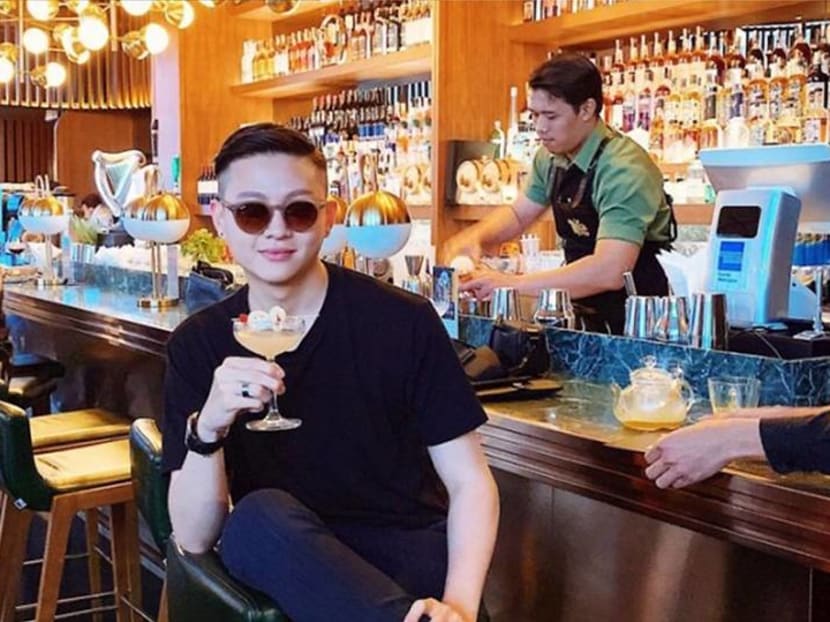
CAI founder Irwin Chua. (Photo: CAI)
The pandemic has made many Singaporeans rethink their careers and where their true passions lie, including CAI founder Irwin Chua.
When the communications graduate started his artisanal ngoh hiang and sambal belacan business in 2018, it was as a side hustle to his day job as a personal assistant to the CEO of an investments company.
READ: Creative Capital: The studio owner bringing wet plate photography back to Singapore
In addition to managing his former boss’ corporate and personal matters, Irwin would also occasionally cook his employer his favourite dishes. So while his professional background was in administration and retail, he has always been a pretty serious foodie.
Find out how this young entrepreneur enlisted the help of his sisters to market his gourmet products, and how he was able to turn his sideline into his main job during the pandemic – even winning the approval of local celebrities and chef with his ngoh hiang and sambal belacan.
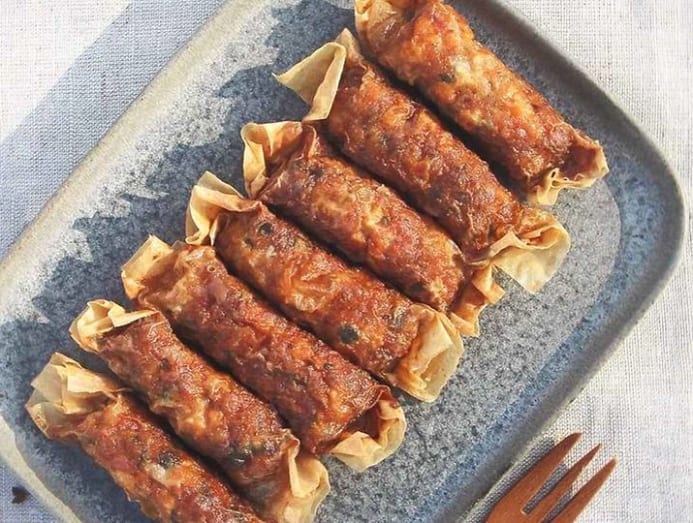
TELL US MORE ABOUT YOURSELF AND YOUR SIBLINGS, AND WHAT EACH OF YOU DO.
My elder sister, Amanda, works for the bespoke travel company, Amala Destinations, and my younger sister, Charmaine, is a freelance social media consultant. Amanda and I run the kitchen; we oversee everything from the start to the end. Charmaine takes the photographs and focuses on our social media presentation.
My siblings and I are very different individuals. But, what we have in common are plenty, too. We share the love of trying different or new cuisines; we share the same humour; and most importantly, we are passion-driven.
READ: Creative Capital: The bar entrepreneur who's changing the way you drink
We were and still are super close. Growing up, we spent a lot of time with our maternal grandparents, and we would always have a soup and three or four dishes for every meal. Ah Mui, our ah mah (Hokkien for grandmother), is a great cook. I remember friends and relatives who came to visit always wanted to stay for a meal. They were always so fond of her cooking. I think our love for food came quite naturally from there.

HOW IS IT WORKING WITH FAMILY?
It is easy because we know each other super well. We know when to push and when to stop. Plus, we know we will put in 100 per cent effort as this is our business.
My siblings call me the drill master when it comes to wrapping the ngoh hiang. I am very particular about the shape and when they first started learning how to wrap back in June during Phase 2, I checked each and every piece, and kept making them re-wrap – even though we don't live together. They loved to complain about it to ah ma, the rest of the family and our friends that I was torturing them. It’s all good now though!
READ: Creative Capital: How three former colleagues got together to start a quirky Singapore sock company
WHEN DID YOU START LEARNING YOUR GRANDMOTHERS’ RECIPES?
I developed the interest to cook when I was a teenager but I think it all started when I was in primary school. I used to follow ah ma to the market every Saturday morning and I would hover around her and our helper in the kitchen. I always pestered them to let me help out. I simply loved being in the kitchen and I realised early on that I had a knack for cooking.
HOW WAS THE BUSINESS STARTED AND GROWN?
To be honest, I was in-between jobs and instead of letting my dream pass me by, I acted on it. I figured there was no harm in trying because I had nothing to lose since I could cook from the comfort of my own kitchen. I also found the process rather therapeutic.
I didn’t have a playbook to follow. Everything was grown organically. It began in 2018 when I started living with my dad and ah ma. She was the one who guided me on ngoh hiang making. Soon, everyone was encouraging me to start a business because they wanted to order large amounts of ngoh hiang to share with their loved ones, and not just have a few pieces at parties or gatherings.
That was how my side hustle began. I launched a social media channel this May during the circuit breaker period. Amazingly, we’ve gained the love of so many new people.
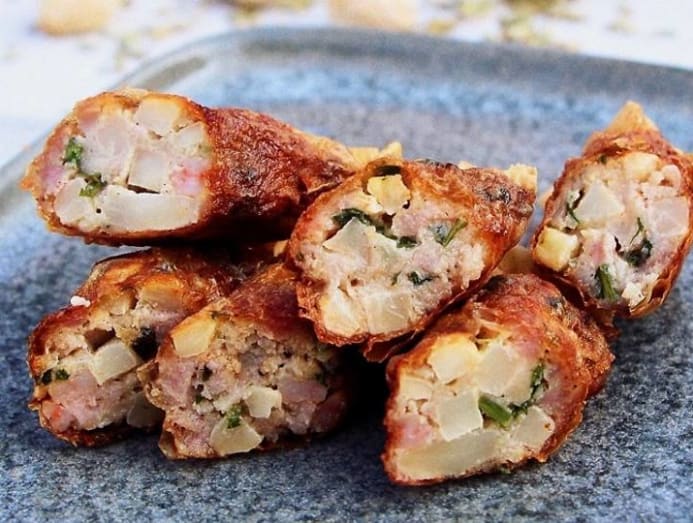
WHY NGOH HIANG? WHY NOT ANOTHER FOOD?
Ngoh hiang goes really well with rice and noodles, and it is a great snack for anytime of the day as well. Also, it was something we ate only a few times a year – during Chinese New Year and once every few months after that. The reason for that is, ngoh hiang is time consuming to make. But I figured, if it were more readily available, people would want to eat more of it.
There are not many people of my age who know how to make ngoh hiang. Rather, most are not interested to learn because of the amount of work that goes into it, especially for our style of ngoh hiang. Our ingredients include pork, prawn, water chestnut – loads of it! – spring onion and Chinese celery. The preparation for just 30 boxes takes half a day; the wrapping, steaming and packing take another half day.
WHAT DO YOU HOPE A CUSTOMER FEELS WHEN HE OR SHE TASTES YOUR FOOD?
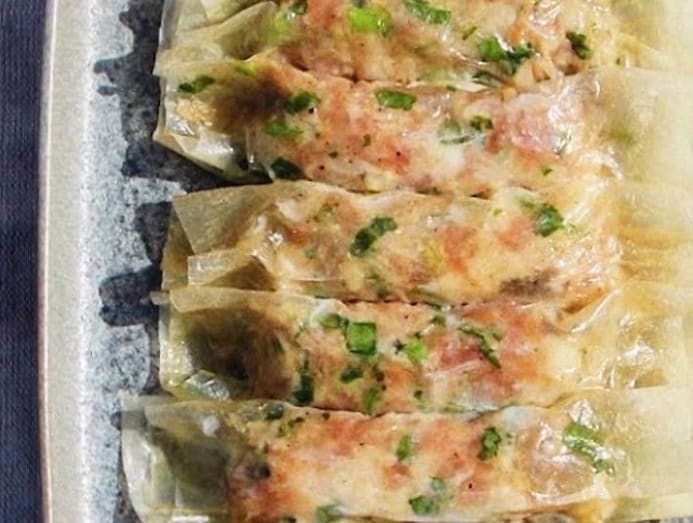
Our ngoh hiang is steamed before freezing to retain the shape. You can even pop it into a toaster oven to heat up if you’re lazy to fry it. Air frying works very well, too.
TELL US ABOUT THE SAMBAL BELACAN. YOUR WEBSITE SAYS IT IS NEITHER HOKKIEN NOR PERANAKAN BUT YOUR AH MAH AH MUI’S VERSION. HOW IS IT DIFFERENT?
Most of the sambals out there include sugar and/or calamansi. Ours is pretty simple – just cayenne chillies, bird’s eye chillies, belacan and salt. It’s all about the ratio; it has to be perfect. Ours is definitely a pick-me-up!
HAS BUILDING THE BUSINESS BEEN EASY FOR YOU OR HAS IT BEEN A CHALLENGE?
It has been a challenge from the start. We are still learning and trying to improve our processes, but I would not have done it any other way. The toughest challenge is the really long hours and the happiest surprise thus far is knowing how much a local celebrity and chef love our ngoh hiang and sambal belacan. While we are confident in our products, that gave us the extra boost.
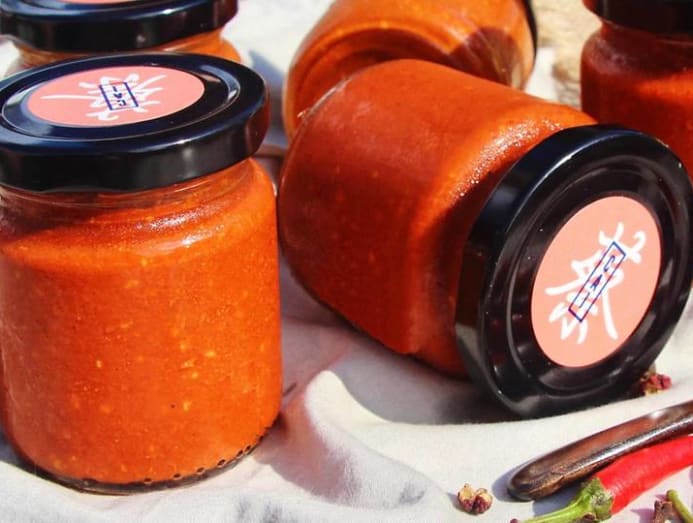
WHERE CAN CUSTOMERS FIND YOUR PRODUCTS?
We deliver and we are also stocked at Crane on Kim Yam Road. It’s a cool social space and they have a retail boutique called Magpie Market with curated houseware and foodstuff.
HOW HAS THE PANDEMIC AFFECTED YOUR BUSINESS?
The pandemic caused us to pause and really think. It made my siblings and I realise what we wanted to do with our lives. It drove us to want to make something for ourselves and go all out for this business. During this trying period, we decided to create social media accounts to share our products with the public. Before that, they were only known to family, friends and a few regulars. Thankfully, sales have increased tremendously since.
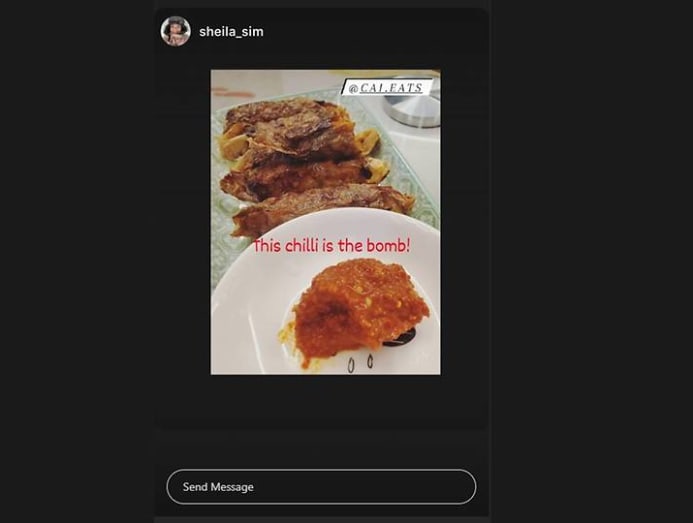
A LOT OF YOUNG ENTREPRENEURS ARE BECOMING INCREASINGLY INTERESTED IN HERITAGE CUISINE AND RECIPES. DO YOU THINK THERE IS A GROWING INTEREST IN PRESERVING THIS PART OF OUR CULTURE?
That is most definitely true. We love our food. There was a number of articles about how our local food was slowly disappearing as the younger generation was unwilling to take over their parents’ stalls in hawker centres and coffeeshops.
READ: Creative Capital: The fashion entrepreneur bringing African fabrics to Singapore
However, in the recent few years, there seems to be a growing interest again. There are only a handful of restaurants in Singapore that serve authentic and traditional cuisine. We are so glad that more and more people are keen to preserve this part of our culture.
WHAT’S THE VISION FOR CAI? WHERE DO YOU HOPE TO BE IN A FEW YEARS?
We would first like to open our very own kitchen and takeaway store. We would like to increase our production and menu offerings but still be able to offer the same homemade feel. In a couple of years, we hope to be able to sell our products regionally. We want people to recognise us, especially our ngoh hiang and know our story.





